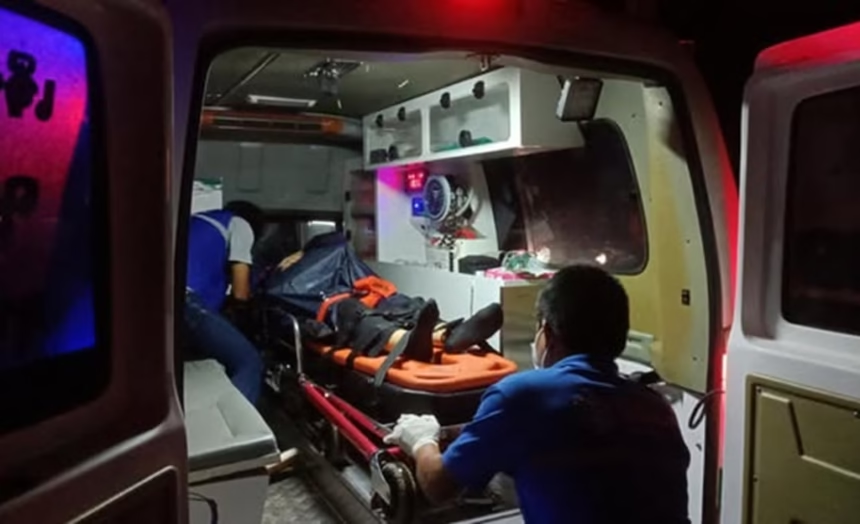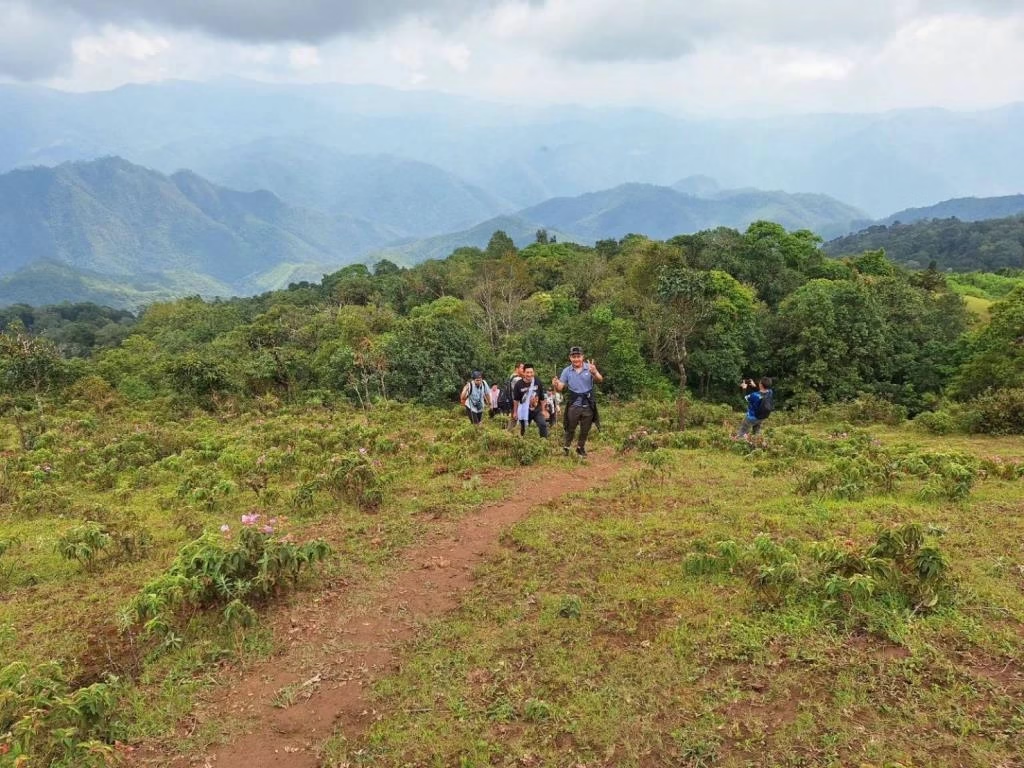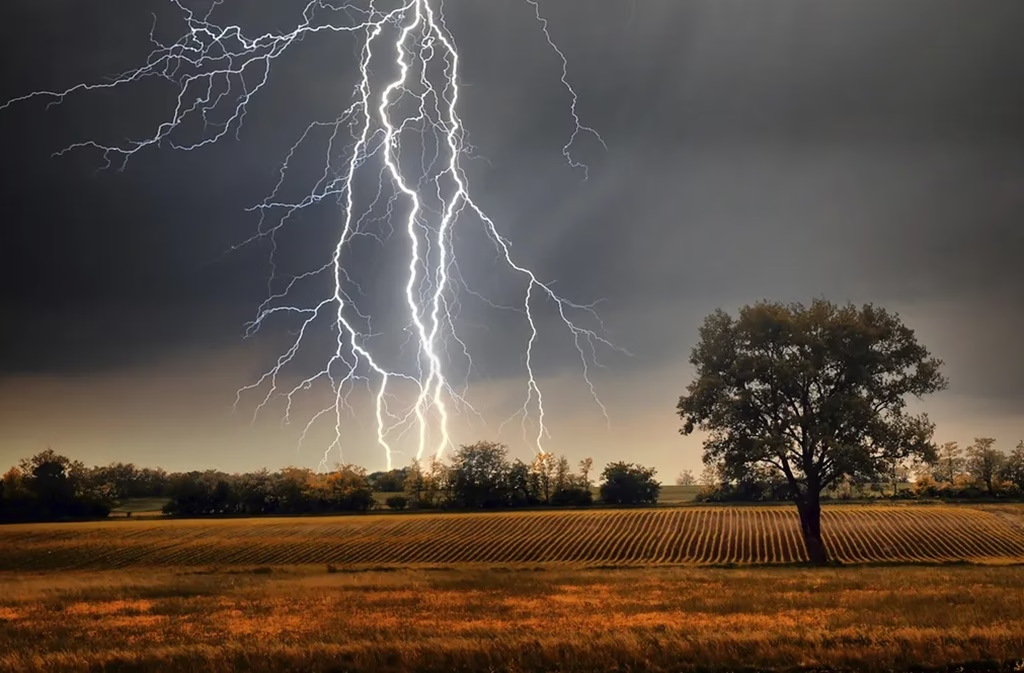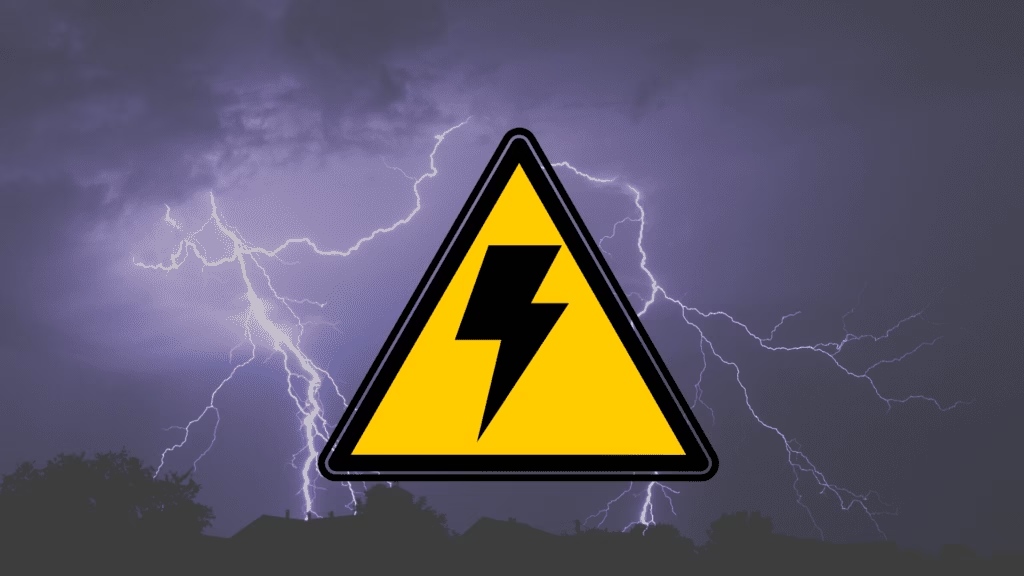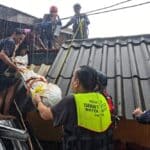MAE HONG SON – A life-or-death moment unfolded on Doi Pui Luang, the highest peak in the province. A group of hikers pushed on during heavy rain when lightning struck a woman from Thung Song, Nakhon Si Thammarat.
She was left unresponsive and needed CPR before a late-night evacuation down the mountain, then an urgent transfer to the hospital.
The incident happened on Sunday evening, after thunderstorms swept parts of Mae Hong Son. The strike hit a group trekking to the summit above Huai Hee village, Huai Pu Ling subdistrict, in Mae Hong Son city district. One tourist, a 30-year-old woman, suffered injuries caused by lightning.
Friends and local officials rushed to help. Warichaya Cha‑um from the Mae Hong Son Tourism and Sports Office, Mallika Jeenakham, the Mayor of Mae Hong Son, Anuwat Rattanapong, the district clerk, Suwit Singkha, the head of Huai Nam Mae Sakut village, members of the territorial defence volunteers, and porters joined the rescue.
They performed CPR, then carried the woman down a steep, slippery path made worse by the downpour. The team reached Huai Hee village before sending her to Sri Sangwan Hospital that night, then on to Nakornping Hospital in Chiang Mai for further treatment.
Doi Pui Luang above Huai Hee is the highest point in Mae Hong Son. The views are outstanding, and the community, with relevant agencies, has worked to promote the area for tourism.
Access remains difficult, though, since the summit can only be reached on foot, so visitor numbers are still limited. Thailand faces a serious but often underreported risk from lightning, especially in the monsoon season from May to October when storms are frequent and intense.
The tropical climate, with high humidity and regular convective storms, fuels heavy lightning activity. Thousands of strikes occur each year across the country. Rural communities see the highest impact, as many people work in open fields or fish in rivers and coastal waters during peak storm periods.
Farmers in provinces such as Nakhon Ratchasima and fishing crews along the Andaman coast face greater danger because shelter is scarce and help can be far away. Thai meteorological studies indicate that lightning causes dozens of deaths and hundreds of injuries each year.
Exact figures are difficult to confirm due to patchy reporting.
Local beliefs sometimes shape how people respond to lightning. In some areas, strikes are seen through a spiritual or karmic lens, which can slow practical safety steps.
Public education on simple precautions remains limited in many places, for example, avoiding open ground, tall trees, or metal objects during a storm. Rural infrastructure often lacks protection, and lightning rods are still uncommon outside towns.
Cities are not exempt. Bangkok records incidents during sudden storms, with high-rise construction workers at particular risk when the weather turns fast. Government bodies and meteorological agencies have expanded safety campaigns in recent years.
The ongoing challenge is to strengthen awareness and basic protection, while respecting daily routines in a country where powerful weather is part of life. Lightning safety in Thailand is critical, especially during the monsoon season (May to October) when thunderstorms are common.
Here are key tips to stay safe in lightning:
1. Follow the 30-30 Rule: If you see lightning and hear thunder within 30 seconds, stay indoors or in a safe shelter. Avoid open fields, hilltops, or isolated trees.
2. Seek Proper Shelter: Find a sturdy building or a hard-topped vehicle with windows closed. Avoid small structures, pavilions, or tents, which offer little protection.
3. Avoid Water and Metal: Don’t fish, swim, or touch metal objects like tools or fences during a storm, as water and metal conduct electricity.
4. Stay Away from Electronics: Avoid using plugged-in devices or corded phones. Lightning can strike power lines, causing surges.
5. Crouch Low if Caught Outdoors: If you can’t reach shelter, crouch low with minimal ground contact (feet together, head down). Don’t lie flat or touch others.
6. Wait 30 Minutes After the Storm: Stay in a safe location for at least 30 minutes after the last thunderclap to ensure the storm has passed.
7. Be Cautious in Rural Areas: Farmers and fishermen, common in Thailand, should monitor weather forecasts and avoid working in open areas during stormy weather.
8. Raise Awareness: Educate others, especially in rural communities, about lightning risks, as cultural beliefs may downplay dangers.
These precautions can significantly reduce the risk of lightning-related injuries in Thailand’s tropical climate. For more weather updates, check the Thai Meteorological Department resources.
Trending News:
Senior Monk in Chiang Rai Investigated Over Alleged Gay Sex Video




